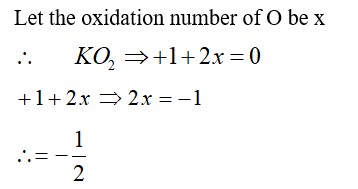11.13.
- Rationalise the given statements and give chemical reactions:
- Lead (II) chloride reacts with Cl2 to give PbCl4.
- Lead (IV) chloride is highly unstable towards heat.
- Lead is known not to form an iodide PbI4.
11.13.
- Rationalise the given statements and give chemical reactions:
- Lead (II) chloride reacts with Cl2 to give PbCl4.
- Lead (IV) chloride is highly unstable towards heat.
- Lead is known not to form an iodide PbI4.
Asked by Shiksha User
-
1 Answer
-
- PbCl2 + Cl2→ PbCl4.
This is because Pb can show +2 oxidation state more easily than +4 due to inert pair effect. - PbCl4→ PbCl2 + Cl2
Because Pb2+ is more stable than Pb4+ due to inert pair effect. - PbI4does not exist because I- ion being a powerful reducing agent reduces Pb4+ ion to Pb2+ ion in solution.
Pb4+ + 2I– → Pb2+ + I2
- PbCl2 + Cl2→ PbCl4.
Similar Questions for you
A
alok kumar singh
From BF3 to BI3 Lewis acidic strength increases
A
alok kumar singh
F2 is the strongest oxidising agent
A
alok kumar singh
HClO4 is the most acidic compound.
Taking an Exam? Selecting a College?
Get authentic answers from experts, students and alumni that you won't find anywhere else
Sign Up on ShikshaOn Shiksha, get access to
- 65k Colleges
- 1.2k Exams
- 679k Reviews
- 1800k Answers




